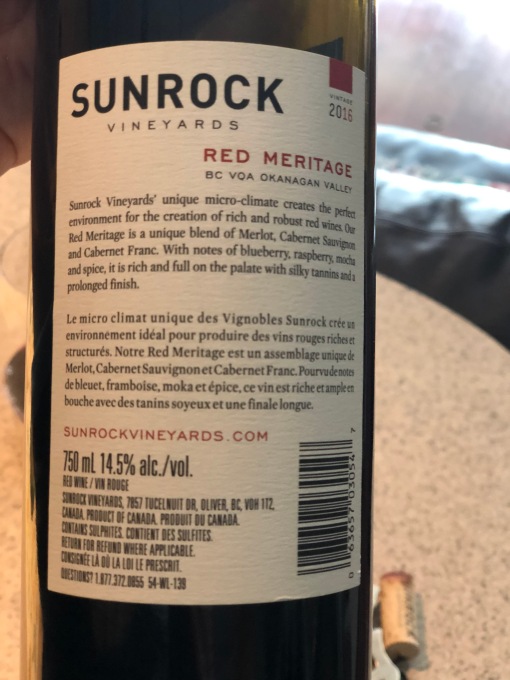By Raymond Lamontagne
[These wines were provided as samples for review purposes.]
You cannot make truly good wine without ripe grapes. Simple, no? Insufficient sugar in the fruit is not going to leave much for yeast to consume, and such starved fungi are not going to produce something with sufficient body (and alcohol) to merit any sort of “greatness” mantle. Moreover, grapes need heat if they are to attain physiological ripeness. This refers to the changes in tannins and other chemical components that occur largely in grape skins, stems and seeds during the ripening cycle beyond the mere increase in sugar. These changes are what produce the key varietal aroma signatures we know and love, preventing a wine from tasting green, weedy, and brittle.
Although sugar ripeness and physiological ripeness are clearly correlated, it would seem that grape hang times might be a stronger predictor of physiological readiness than just heat alone, although in my view (and botanically speaking) you aren’t going to get any degree of maturation, period, without heat. The key question for wine quality is: how much heat is too much? Overly ripe grapes mean clumsy, muddled wines that are boozy, lacking in precision or definition, and often almost devoid of any sense of place or regional character. Such wines are going to be tremendously fruity and powerful, but may not offer much in the way of nuance or balance. As I read up on Sunrock Vineyards, which could very well be the hottest single vineyard site in British Columbia, I wonder how they approach these ripeness issues.
Sunrock is owned by Arterra Wines Canada, formerly the Canadian subsidiary of the massive Constellation Brands, but recently acquired in 2016 by the Ontario Teacher’s Pension Plan (for some reason that tickles my funny bone…I’m sure we drove many a substitute teacher to drink). Arterra farms around 1300 acres of Okanagan vineyard, with the expected corresponding range of quality tiers. Jackson-Triggs might be the best known of Arterra’s brands, and the single-vineyard Sunrock labels formerly carried this name as the top tier of that portfolio. Sunrock is now a standalone winery, a fine example of a large corporate entity with the good sense to recognize and preserve the unique character of a single site. And what a site it is.

Sunrock’s vineyard is 180 acres in the Osoyoos Lake Bench, described by Arterra’s director of grape growing as “textbook viticulture”. The centrepiece of the area is the eponymous massive south-facing granite outcropping that reflects sunlight during the day even as it retains considerable warmth well after sunset. The nearby lake only compounds these effects. The net result is prime territory for late-ripening varieties such as Cabernet Sauvignon. When the vineyard was first planted in the late 1990s, some intrepid spirit decided to test out 30 acres of Pinot Noir, along with several white varieties. Not long thereafter these vines were grafted over to Syrah (called Shiraz here, as the original vineyard manager was an Aussie), which is better suited to absorb the considerable heat of the area. Winemaker Dave Carson has worked in the Okanagan for a long time, and he seems to revel in the fact that these viticultural conditions help mitigate any sharp edges caused by subpar vintages. Let’s see what the fruits of this particular vineyard yielded.
2015 Sunrock Vineyards Shiraz (~$32)
We start with a completely opaque purple Shiraz. These crushed and destemmed grapes saw 14 months in a mixture of French and American oak, after around two weeks’ fermentation in stainless steel. The result is indeed something pretty classically “Shiraz”: affable, rather bright for such a dark wine, gregarious and more than willing to share its bounty of fruit and spice. Like polished obsidian in the glass, it is impeccably smooth with no wild or woolly edges. Although the oak is clearly present, it serves deftly as a picture frame for the fruit rather than crowding it out with broad fumbling brushstrokes. The 14.5% ABV yields only a slight burn. This is pretty well-constructed, built to absorb its inevitable breadth.

I translate this on the palate as a nucleus of huge blackberry jam surrounded by crushed blueberries, fennel seeds, black licorice, toasted sage, dusty old cloves and black peppercorns, with a slight fade of camphor. I can detect a whole spectrum of fruits here, from pie and sweet red cherries to black plums and even fruitcake, with boysenberry appearing somewhere in the midpalate. These fruits are all entombed in milk chocolate and fresh ground espresso, this juxtaposed mocha note only gathering steam with time and air in the glass. The wine is lusciously full-bodied with medium acidity and rich pliant tannins. The finish is a longer-than-expected puff of sweet tobacco. This is not going to radically shift any paradigms, but why does it have to do so? Sometimes a tasty Shiraz is an end in itself.
89- points
2015 Sunrock Vineyards Illumina (~$35)
Next up we have a blend of the aforementioned Shiraz grapes and…Zinfandel? Fun. One of the many things I enjoy about Zin is the grape’s tendency to ripen unevenly within the same bunch. Some of the berries might remain pretty green, whereas others could raisinate almost completely, with every possible gradation in between these extremes. This can yield a pretty decent complexity to a varietal wine or a blend. In this case, the intent was to maximize ripening by harvesting both varietals just before frost set in. Fermentation took place in open-topped steel tanks, with the must punched down twice a week for two weeks, followed by 16 months of oak aging. All this adds up to a massive and extracted beast of a wine.

And how. I’m not finding any real suggestion that any of the Zin berries were indeed underripe. This is again dark purple, with a fearsomely sweet impression on the palate. Placid, perhaps a little plodding, with light whiffs of hickory smoke and ashtray betraying the oak (although these elements are once more deftly dialed down in favour of the fruit). A sip of this conjures up images of chocolate pudding skin and slick black and grape-flavoured licorice twists floating in a syrupy tea of blueberries, blackberries, black raisins, Fruit Roll-Ups, chocolate chips, vanilla Coke, treacle toffee, baking spices, and actual black tea (I almost always find that last note in Zin, somewhere). It is all a bit overbearing, and yet with the right life preserver I can swim these sticky dark tides at least for a little while.
87+ points
2015 Sunrock Vineyards Red Meritage (~$30)
Now THIS is where we truly need all that reflected heat. I’m not convinced that Zin needs to rent much space near that scorching granite outcropping, but this blend of 80% Merlot, 15% Cabernet Sauvignon and 5% Cabernet Franc should make better use of the location. The winemaking details closely mirror those for the Illumina blend, except that closed steel tanks were used instead of open vessels, requiring pump-overs to take the place of punch-downs. This should yield less oxidation and perhaps a gentler extraction, and at the end of the day these Bordeaux varietals, particularly the Cabs, seem tailored made for this vineyard.

Voila. This is more red than purple. I am also back to getting some red fruits here, even some pomegranate and hard red candy in the long finish. The nose is all fresh black plums and darker cherries, with a generous helping of cassis, graphite, violets, cherry-flavoured tobacco, new drill bit, leather and very slight red bell pepper. Canadian Meritage blends can be decidedly “modern” wood-driven wines, and this shares that trait to some degree, albeit in well-integrated fashion, reflecting McCain Deep and Delicious cake drizzled with burnt caramel and vanilla pudding as opposed to anything harsher or more all-consuming. I am missing a little acidity but those rather ripe, slightly fuzzy tannins are on point.
88+ points
2015 Sunrock Vineyards Cabernet Sauvignon (~$30)
Here we are, the Canadian white whale: the varietal Cab. This grape, with the thickest skins and longest ripening times of the five varieties that live there, should be the king of Sunrock’s vineyard, given that this site seems born to nurture this varietal. The winemaker returns to open tops and punch-downs here, and Cab should stand up well to this sort of treatment. I pour a glass and take a sniff.

Plush vanilla and a clear homage to Skor bars. The folks at Sunrock really do try to keep oak in check, and by my reckoning we are 4 for 4 in this department. Here come the fruits: classic Cab aromas of blackcurrants and black cherries, with a backup band of blackberries, grilled red pepper, clay flower pot, dried peppermint and accents of Turkish delight and Chinese five-spice. None of the fruits register as dried in the slightest. A spike of dark chocolate rises up through the purple haze. This is still quite wiry on the palate, mildly stern and hardtack, albeit with less of that Cab midpalate brittleness that often necessities a more pliant blending partner. The rather rustic, prickly tannins could use some time, but in this vineyard this grape can indeed ride solo.
89+ points

Cork Rating: 4/10 (Yeah, the bottom one is a bit different but not enough to merit its own rating.)



This is the reason it is important for the fruit to have sufficient sugar. This is the only way a considerable alcohol percentage can be achieved in the wine that you make.
LikeLike